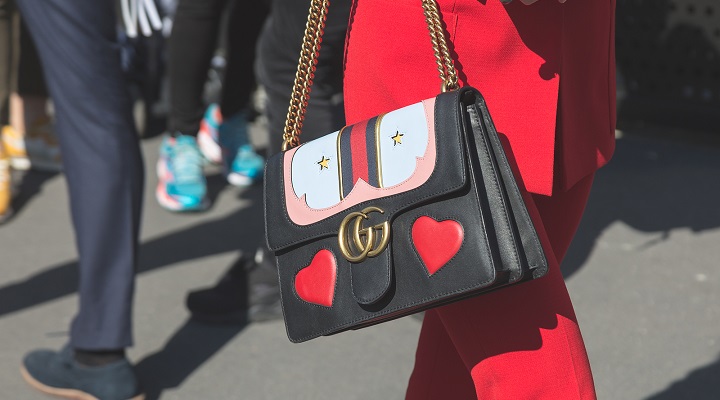Fashion resale has been making headlines this month. In just the last two weeks, Gucci started selling pre-loved items through a partnership with luxury consignment platform The Real Real, and Levi’s launched a new website offering secondhand jeans and jackets. They are the latest brands to get behind the growing resale market, sometimes called recommerce, which grew a staggering 21 times faster than the retail market overall in 2016-2019, according to ThredUp, a digital platform in the
he US that enables consumers to buy and sell secondhand clothing. ThredUp expects the market to be worth US$51 billion by 2023.
Up to now, growth has largely been fuelled by the rise of platforms like The Real Real and ThredUp, not to mention DePop, Poshmark, Vestiaire Collective and others, that have made shopping for secondhand clothing as easy as buying new. No more trawling through racks of musty jumpers to find that hidden gem in an op shop; online shoppers can search by brand and size and access listings right around the world.
At the same time, younger consumers have embraced resale as an environmentally friendly alternative to fast fashion. ThredUp claims that if everybody bought one used item, instead of buying new, it would save 449 million pounds of waste.
But experts in this space believe there’s another reason why fashion resale is taking off right now, and in particular, why brands like Gucci and Levi’s are getting in on the trend themselves: Covid-19.
“Covid-19 has forced brands to look for new growth channels and they are realising that they are missing out on incremental revenue if they give up control of their secondhand sales to outside marketplaces,” Andy Ruben, the founder and CEO of Trove, a company that provides white-label secondhand marketplace solutions for brands like Patagonia and Levi’s, told Inside Retail.
What’s driving the current growth?
There are two main categories of fashion resale: peer-to-peer platforms like ThredUp, DePop and Vestiaire Collective that are consumer driven, and brand-led stores that are either developed in-house, powered by a third-party provider like Trove, or based on a consignment platform like The Real Real.
While brands have often shied away from selling their own pre-loved products in the past, due to the complexity of collecting and pricing the items, and fear that it would devalue their brand, they seem more willing to consider the resale market amidst the economic fallout from Covid-19.
“At the same time, consumers are facing tighter budgets because of the pandemic and are also looking for more sustainable shopping options, but they still have a desire for newness that resale can fill,” Ruben noted.
Sydney-based retail strategist Rosanna Iacono agrees that consumers have become more frugal due to the economic downturn, and therefore more receptive to the idea of buying secondhand clothing.
“Particularly for those that have more limited income but are not prepared for complete austerity, buying secondhand is a great way to keep household budgets under control. Resale makes your dollar go further,” she told Inside Retail.
Who stands to benefit the most?
Between Covid-19 and the climate crisis, Iacono believes resale is benefiting from a “perfect storm of several trends converging at once”. But who is set to benefit the most?
“The really obvious category most suited to resale is luxury goods,” she said, “particularly designer leathergoods and other accessories.”
High-end sneakers, such as Nike’s limited-edition Le Bron 10 style, are also in demand, trading for 10 times their original RRP on the sneaker-specific secondhand marketplace StockX and the menswear resale platform Grailed. In fact, the opportunity to resell products after purchase is changing the way some consumers think about shopping for new items.
“What really savvy consumers are thinking about more and more is the resale value of the items they are purchasing before even buying them,” Iacono said.
“So the things that will matter most to keep resale value high will be quality and durability, brand cachet and style longevity – this applies virtually to any category, from Lululemon tights [one of the top five best-sellers ThredUp] to Chanel handbags.”
According to Ruben, Levi’s is a good example of the type of brand that is well-suited to resale because “their products really do get better with time”.
This is in contrast to fast fashion brands, whose products tend to deteriorate and look dated more quickly.
“This will be another contributing factor to the decline of fast fashion – it’s lack of resale value,” Iacono said.
What’s next?
Both Ruben and Iacono expect more brands to start offering pre-loved items as consumer interest in secondhand continues to grow.
“Circular shopping is becoming more popular and brands are realising they need to be in the recommerce space because that is where increasing numbers of consumers are shopping today,” Ruben said.
“I think we’ll continue to see brands taking control of their own resale channels to ensure they are the ones who continue to profit from the sale of their own merchandise.”
Iacono thinks brands will start to see resale as a customer acquisition tool.
“Luxury brands are very savvy and are using these more accessible price-points for their cradle-to-grave strategy, bringing increasingly younger consumers to the brand who will start by buying secondhand and graduate to new purchases as their spending power increases,” she said.
This mindset isn’t just limited to resale. Iacono believes it will drive more brands to offer rentals, too.
“The most progressive brands will be offering all three options – new sales, resale and rental – as part of a comprehensive service and experiential offering,” she said.

